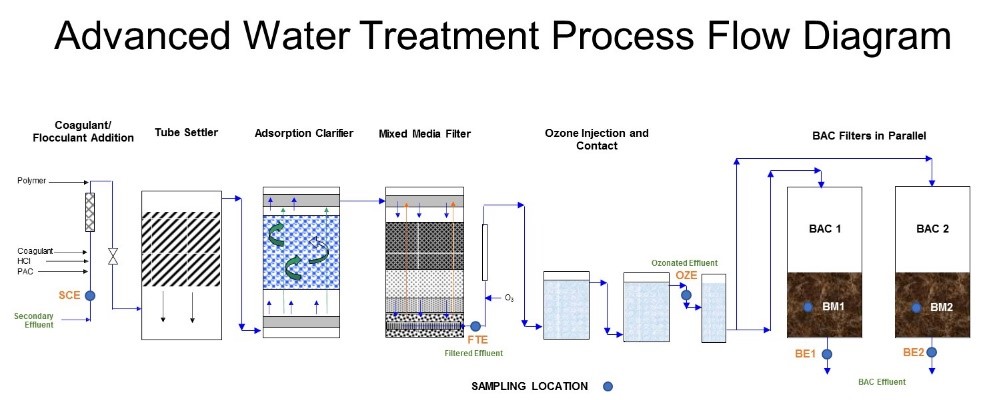The U.S. Bureau of Reclamation and Washoe County Community Services Department are funding a feasibility study to demonstrate low-energy treatment technology for reclaimed treated effluent for indirect potable reuse (IPR) purposes. The State of Nevada has adopted regulations to allow IPR of advanced treated reclaimed water (Category A+) for potable reuse after passing through an environmental buffer. The study is being conducted at the Washoe County's South Truckee Meadows Water Reclamation Facility (STMWRF). Additional funding and project support is being provided by Truckee Meadows Water Authority. The current STMWRF treated effluent (Category A) is beneficially reused for landscape irrigation purposes. The goals of the feasibility study are to:
- Evaluate lower energy intensive treatment technologies that can produce Category A+ water suitable for IPR
- Evaluate if IPR enables the region's water resource portfolio with greater resiliency with respect to climate change effects
- Develop a water market value impact study for Category A+ water
- Evaluate methods acceptable to the Nevada State Water Engineer's Office to create and account for the new Category A+ water rights.
The outcomes of this study and other projects related to IPR feasibility and demonstration will provide the Northern Nevada region significant water resource management benefits including improving efficiency, providing flexibility during periods of water scarcity, and diversifying the region's water supply portfolio. The study consists of a pilot scale demonstration facility being operated by the University of Nevada, Reno, Washoe County, and other regional agencies, based on ozone-biological activated carbon filtration technology at STMWRF. The treatment system is being monitored for trace inorganic contaminant removal, bulk and emerging organic contaminant removal, pathogen reduction to meet Category A+ water, and energy and chemical use during treatment.
